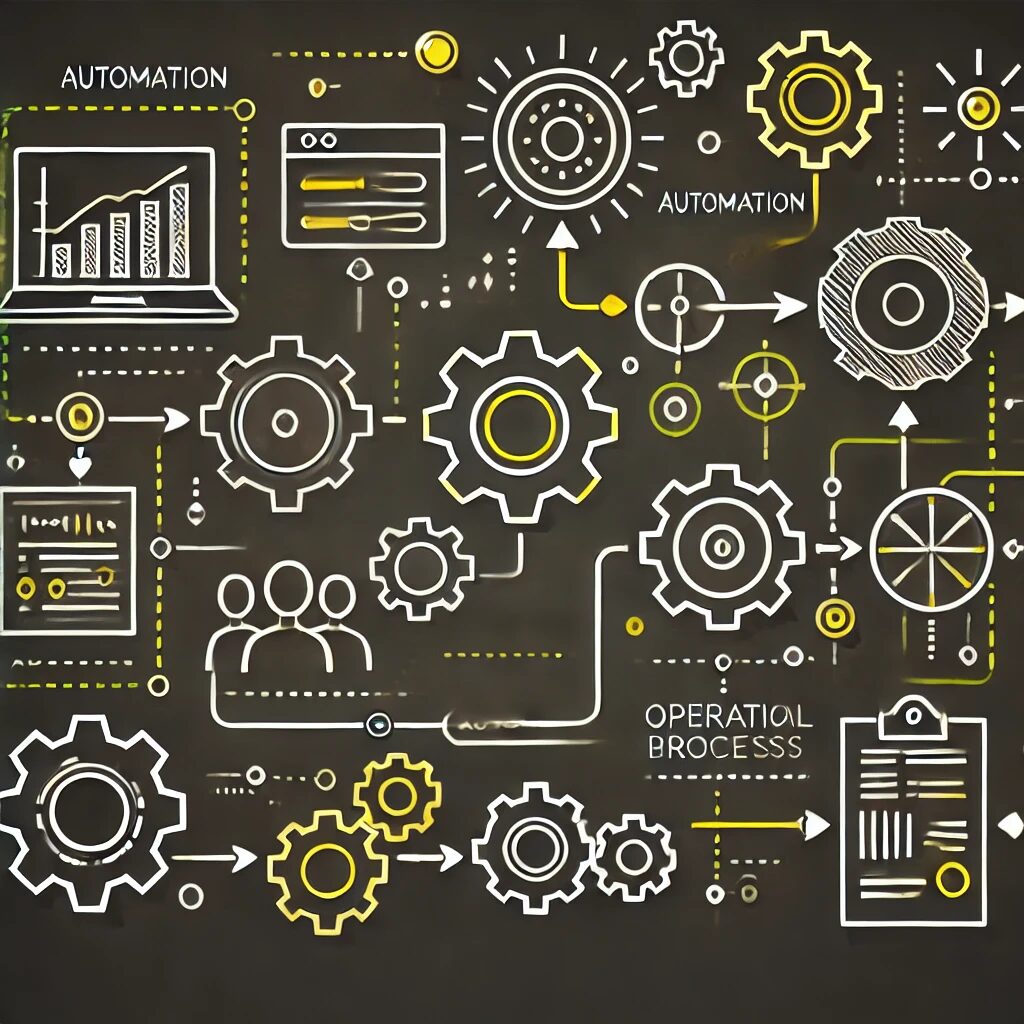
Mastering Value Streams for Oil & Gas Optimization. From Value Identification to Value Realization: The Energy Enterprise in Motion.
In the highly complex and volatile oil and gas industry, organizations must continuously optimize operations to maintain profitability while navigating market fluctuations, regulatory pressures, and the energy transition. Traditional approaches to operational improvement often focus on isolated processes or technologies, missing the end-to-end perspective needed to drive transformative results.
Business Architecture Value Streams provide oil and gas companies with a powerful framework to visualize, analyze, and optimize how value flows through the enterprise. By mapping end-to-end value delivery from trigger to outcome—across organizational boundaries—executives gain critical insights that drive operational excellence, reduce costs, enhance customer experience, and accelerate digital transformation.
1: Value Streams vs. Process Models: The Critical Distinction
Business Architecture Value Streams differ fundamentally from process models, providing a strategic lens that connects enterprise capabilities to value delivery. Understanding this distinction is essential for leveraging value streams effectively.
- Strategic Orientation: Value streams capture what value is created and why, focusing on outcomes rather than activities, providing executives with a strategic view of organizational performance.
- Organizational Neutrality: Unlike process models that often reflect current organizational structures, value streams transcend departmental boundaries to show how value flows across the enterprise.
- Capability Connection: Value streams integrate with business capability maps, showing which capabilities contribute to value delivery at each stage of the value stream.
- Stability Framework: While processes change frequently with organizational restructuring and technology implementations, value streams remain stable, providing a consistent reference for transformation initiatives.
- Customer-Centric Perspective: Value streams begin and end with the stakeholder, maintaining focus on the ultimate recipient of value rather than internal operational concerns.
2: The Anatomy of an Oil & Gas Value Stream
Value streams consist of several key structural elements that collectively describe how value flows through the organization to ultimate stakeholders.
- Value Stream Definition: Each value stream has a clear name, description, and identification of the triggering stakeholder and the value proposition delivered to the receiving stakeholder.
- Value Stages: The value stream is divided into 5-7 major stages that represent significant milestones in value delivery, from initial trigger to final value realization.
- Stage Contributions: Each stage identifies the specific increment of value added toward the ultimate value proposition, focusing on outcomes rather than activities.
- Capability Mappings: Business capabilities required to deliver each value stage are mapped to the relevant stages, connecting what the business does to how value flows.
- KPIs and Measurements: Performance indicators linked to each value stage provide the metrics to measure efficiency and effectiveness of value delivery.
3: Core Value Streams in Upstream Operations
Exploration and production operations contain several critical value streams that drive the core business of finding and extracting hydrocarbons.
- Prospect to Production: This value stream traces the journey from initial geological assessment to producing well, encompassing exploration, appraisal, development, and initial production activities.
- Reservoir to Recovery: This value stream covers the optimization of reservoir performance from initial production through enhanced recovery techniques to maximize resource extraction.
- Well Delivery: From drilling authorization to completion, this value stream encompasses the efficient delivery of new wells, workovers, and well interventions.
- Asset Integrity Assurance: This value stream covers the lifecycle of maintaining asset integrity from inspection scheduling to verification of remedial actions.
- Production Optimization: From production constraint identification to performance verification, this value stream addresses the continuous improvement of production operations.
Did You Know:
- A recent Ernst & Young survey found that while 78% of oil and gas executives consider value stream optimization essential for operational excellence, only 31% of companies have implemented comprehensive value stream management practices.
4: Midstream Value Stream Optimization
Transportation, storage, and wholesale operations contain distinct value streams that ensure reliable movement of hydrocarbons from production to processing.
- Transport Capacity Management: This value stream covers the planning, allocation, and optimization of transportation capacity across pipelines, rail, and shipping.
- Storage Utilization: From capacity forecasting to inventory management, this value stream optimizes the utilization of storage assets throughout the supply chain.
- Terminal Operations: This value stream encompasses the efficient receipt, storage, and dispatch of products through terminal facilities.
- Supply Chain Visibility: From production forecast to delivery confirmation, this value stream ensures transparency and coordination across the hydrocarbon supply chain.
- Wholesale Transaction Management: This value stream covers the lifecycle of wholesale transactions from customer negotiation to delivery and settlement.
5: Downstream Value Stream Excellence
Refining, distribution, and retail operations contain crucial value streams that transform raw hydrocarbons into marketable products delivered to end customers.
- Feedstock to Product: This value stream traces the transformation of crude oil into refined products, from feedstock selection through refining to final product certification.
- Product to Market: From production planning to customer delivery, this value stream ensures the right products reach the right markets at the right time.
- Retail Customer Experience: This value stream covers the end-to-end customer journey at retail sites, from forecourt entry to transaction completion and exit.
- Fleet Management: From customer enrollment to ongoing service delivery, this value stream manages the relationship with commercial fleet customers.
- Loyalty Management: This value stream encompasses the customer journey from program enrollment through transaction accumulation to reward redemption.
6: Enabling Value Streams for Operational Support
Beyond core operations, oil and gas companies rely on critical enabling value streams that support overall business performance.
- Asset Lifecycle Management: From initial investment planning to decommissioning, this value stream optimizes the complete lifecycle of physical assets.
- Workforce Management: This value stream covers the entire employee journey from recruitment through development to retirement or separation.
- Supplier Relationship: From supplier qualification to performance management, this value stream optimizes the value derived from supplier partnerships.
- Regulatory Compliance: This value stream ensures adherence to regulations from requirement identification through implementation to compliance verification.
- Financial Management: From transaction capture through reconciliation to financial reporting, this value stream ensures financial accuracy and control.
Did You Know:
- According to a 2023 McKinsey study, oil and gas companies that implemented comprehensive value stream mapping and optimization achieved 12-18% improvements in operational efficiency and 15-25% reductions in end-to-end cycle times across key business processes.
7: Value Stream Analysis Methodology
Effective value stream analysis requires a structured approach that balances strategic vision with operational reality.
- Value Stream Identification: The first step identifies the major end-to-end flows of value through the organization from trigger to outcome.
- Current State Mapping: This phase documents how value currently flows, identifying stages, stakeholders, capabilities, and performance metrics.
- Pain Point Analysis: Critical delays, bottlenecks, gaps, and inefficiencies in the current value stream are identified and prioritized.
- Future State Design: An optimized future state value stream is designed to address pain points and enhance value delivery.
- Transformation Roadmapping: The path from current to future state is planned with specific initiatives, timelines, and success metrics.
8: Cross-Value Stream Integration
In a complex industry like oil and gas, significant value exists at the intersection of multiple value streams, requiring careful integration and coordination.
- Value Stream Dependencies: Analysis identifies how outputs from one value stream serve as inputs to others, creating critical handoff points.
- Shared Capability Utilization: Many capabilities serve multiple value streams, requiring optimization across value streams rather than in isolation.
- Integration Point Performance: Metrics focused on handoffs between value streams can reveal cross-functional inefficiencies invisible in single-stream analysis.
- End-to-End Optimization: Rather than sub-optimizing individual value streams, integration focuses on optimizing the entire network of interconnected value streams.
- Governance Alignment: Effective integration requires governance structures that span value streams and balance competing priorities.
9: Digital Transformation Through Value Stream Lens
Value stream analysis provides the essential business context for successful digital transformation initiatives in oil and gas companies.
- Digital Opportunity Identification: Value stream analysis reveals high-impact points where digital technologies can remove constraints and enhance flow.
- Technology Selection Guidance: Value stream requirements inform the selection of digital solutions that address specific value delivery challenges.
- Implementation Prioritization: Digital initiatives are sequenced based on their impact on value stream performance and dependencies.
- Cross-Functional Alignment: The value stream perspective ensures digital initiatives span organizational boundaries to deliver end-to-end improvements.
- Benefit Realization: Value stream metrics provide clear measures to track the business impact of digital investments.
10: Value Stream-Based Performance Management
Value streams provide a powerful framework for measuring, monitoring, and improving operational performance across the enterprise.
- End-to-End Metrics: Value stream-based measurement focuses on total cycle time, cost, and quality from trigger to outcome rather than local process metrics.
- Constraint Identification: Performance analysis pinpoints the specific stages and capabilities that constrain overall value stream performance.
- Cross-Functional Accountability: Value stream metrics create shared accountability across organizational silos for collective performance.
- Continuous Improvement Focus: Regular performance reviews based on value stream metrics drive ongoing optimization and innovation.
- Investment Prioritization: Performance data guides resource allocation to address the most critical value stream constraints.
11: Value Stream Optimization Techniques
Once value streams are mapped and analyzed, various optimization approaches can enhance flow and reduce constraints.
- Constraint Removal: Resources are focused on identifying and eliminating the primary constraints in each value stream to improve overall flow.
- Handoff Optimization: Transitions between stages and across organizational boundaries are streamlined to reduce delays and information loss.
- Parallel Processing: Where possible, activities are redesigned to occur in parallel rather than sequentially to reduce total cycle time.
- Decision Point Acceleration: Critical decision points are identified and streamlined with clear criteria, authority, and supporting information.
- Automation Opportunity: Manual, repetitive activities within the value stream are targeted for automation to improve speed and consistency.
12: Value Stream-Based Organizational Design
Value stream analysis provides insights for designing organizational structures that enhance flow and collaboration rather than reinforcing silos.
- Value Stream Alignment: Organizational structures can be redesigned to align with major value streams rather than traditional functional silos.
- Role Definition: Positions and responsibilities are defined to optimize contribution to value delivery across organizational boundaries.
- Governance Structures: Cross-functional governance bodies are established with accountability for end-to-end value stream performance.
- Incentive Alignment: Performance management and reward systems are redesigned to recognize contribution to value stream outcomes.
- Collaboration Enhancement: Physical and virtual workspaces are designed to facilitate coordination across value stream stages.
13: Value Stream-Based Technology Architecture
Value streams provide the business context for designing technology architectures that support end-to-end flow rather than point solutions.
- Architecture Alignment: Technology architectures are designed to support the flow of value across the enterprise rather than isolated functional needs.
- Integration Prioritization: System integration efforts focus on the critical handoff points identified in value stream analysis.
- Data Architecture: Information models and data flows are designed to provide visibility and support decision-making across the value stream.
- Application Portfolio Rationalization: Applications are evaluated based on their contribution to value stream performance rather than local functionality.
- Technology Investment Planning: Capital expenditures for technology are prioritized based on value stream impact and constraints.
14: Change Management for Value Stream Transformation
Implementing value stream-based optimization requires effective change management that addresses cultural and organizational resistance.
- Stakeholder Engagement: Key stakeholders across the value stream are involved in analysis and solution design to build ownership and commitment.
- Vision Communication: A compelling vision of value stream excellence is communicated to build understanding and motivation for change.
- Capability Development: Training and support are provided to build the skills needed for value stream thinking and cross-functional collaboration.
- Quick Win Identification: Early successes are targeted to demonstrate the value of the approach and build momentum for broader transformation.
- Culture Evolution: Cultural norms that reinforce silo thinking are identified and addressed to support cross-functional cooperation.
15: Value Stream Governance and Sustainability
Sustaining value stream excellence requires ongoing governance and continuous improvement rather than one-time optimization efforts.
- Value Stream Ownership: Clear accountability is established for the ongoing performance and optimization of each major value stream.
- Regular Performance Reviews: Scheduled reviews evaluate value stream performance against targets and identify improvement opportunities.
- Continuous Improvement Process: A structured approach to ongoing optimization ensures value streams evolve with changing business needs.
- Technology Evolution: Systems and tools supporting value streams are regularly assessed and enhanced to maintain alignment with business requirements.
- Knowledge Management: Lessons learned and best practices from value stream optimization are captured and shared across the organization.
Takeaway
Business Architecture Value Streams provide oil and gas companies with a powerful framework for visualizing, analyzing, and optimizing how value flows through the enterprise. By focusing on end-to-end value delivery rather than isolated processes or functions, organizations gain insights that drive operational excellence, reduce costs, enhance customer experience, and accelerate digital transformation. Value streams create a stable reference architecture that connects strategy to execution, aligns capabilities with value delivery, and supports cross-functional collaboration. Whether addressing upstream extraction efficiency, midstream logistics optimization, or downstream customer experience, the value stream perspective enables holistic improvements that traditional approaches often miss.
Next Steps
- Identify Your Critical Value Streams: Document the 5-7 major value streams that drive your core business, from stakeholder trigger to ultimate value delivery.
- Assess Current Performance: Analyze your key value streams to identify constraints, bottlenecks, and improvement opportunities affecting operational performance.
- Establish Value Stream Governance: Designate ownership and accountability for each major value stream to drive cross-functional optimization.
- Connect Capabilities to Value Streams: Map your business capability model to value streams to understand how capabilities contribute to value delivery.
- Develop Optimization Roadmap: Create a prioritized plan for addressing the most critical constraints and opportunities in your key value streams.



